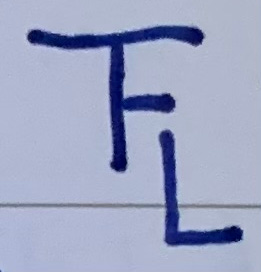The 1992 USDA Food Guide Pyramid was a visual guide to “healthy” eating, divided into six horizontal sections representing different food groups: grains, vegetables, fruits, milk, meat/poultry/fish/beans, and fats/oils/sweets. It was adopted to offer nutritional advice and promote a diet rich in grains, fruits, and vegetables, with moderate amounts of protein and dairy, and minimal fats and sweets.
1. The corrupt history of the food pyramid
Politically Driven, Not Science-Based: The food pyramid was shaped more by politics and industry interests than by solid scientific evidence.
Ancel Keys’ Flawed Influence: Keys promoted the idea that saturated fat caused heart disease using selective, weak data, suppressing conflicting research.
Suppressed Studies: The Minnesota Coronary Study, led by Keys, showed no harm from saturated fat—but results were delayed and distorted for years.
Grain Surplus Shaped Guidelines: U.S. dietary recommendations were influenced by agricultural policy and grain overproduction, leading to high-carb, low-fat advice.
Global Spread & Health Consequences: Australia and others copied these flawed guidelines, coinciding with rising obesity, diabetes, and poor metabolic health. Some experts now admit past mistakes, but reform remains slow and secretive—though current inquiries offer a small chance for change.
2. Rebuilding the Food Pyramid
By: Meir J. Stampfer & Walter C. Willet — Scientific American
1992 Pyramid: Emphasized high-carb, low-fat diet; grouped all fats and proteins together—oversimplified and misleading.
2005 MyPyramid: Added focus on physical activity and whole grains, but lacked clear visual guidance and over-relied on online customization.
Key issues: Promoted too many refined carbs and dairy. Treated all fats as harmful, ignoring benefits of healthy fats (olive oil, nuts, fish). Trans fats are especially harmful and should be avoided entirely. Overlooked differences between red meat (“linked” to disease) and healthier proteins.
Harvard’s Healthy Eating Pyramid Focuses on: Healthy fats, whole grains, fruits & vegetables, and moderate protein
Limits: Red meat, refined starches, sugar, and dairy
Adds: Daily multivitamin, optional moderate alcohol
Proven to reduce heart disease risk by up to 40% in studies.
The revised pyramid shows more clarity, but I still feel animal-based protein, specifically red meat, is getting more shade than it deserves. I also feel recommended grain intake is very exaggerated, so lets dive deeper.
3. ‘Healthy’ Whole Grains Are a Lie
Grains contain anti-nutrients, which block nutrient absorption, and modern processing skips traditional methods that reduced these effects. Modern grains are less nutritious and more toxic due to crossbreeding and environmental pollution. Farming chemicals, especially glyphosate (week 4), are heavily used on grains and linked to diseases like cancer, dementia, and heart disease.
Mycotoxins from grain mold and gluten sensitivity contribute to various health issues, including autoimmune disorders and mental illness. Grains have poor bioavailability of nutrients, and their protein is low quality. Health claims about grains are largely based on weak observational studies, not strong clinical trials.
Whole grains are high in fiber, but too much can be harmful, and better sources exist (like leafy greens).
4. Approximately Half of Total Protein Intake by Adults Must be Animal-Based to Meet Nonprotein, Nutrient-Based Recommendations
By: National Library of Medicine
1) Assess how reducing animal protein intake affects nutritional adequacy and diet cost across five French adult subpopulations. 2) Determine minimum total protein levels and minimum animal protein contributions needed to meet all non-protein nutrient recommendations.
Data Source: 2005–2007 INCA2 survey, 2624 French adults in 5 subgroups: Women < 50 y, Women 50–64 y, Women ≥ 65 y, Men < 65 y, Men ≥ 65 y
Model Set #1: Find minimum total protein needed for overall nutrient adequacy. Results: Minimum protein needed to meet non-protein nutrient needs was ~50 g/day, below recommended intake for all except women < 50 y.
Model Set #2 – Minimum % Animal Protein (while maintaining total protein adequacy). Elderly adults needed higher animal protein: Men ≥ 65 y: minimum 60% animal protein, Women ≥ 65 y: minimum 55%. Younger adults needed less: Men < 65 y: minimum 45%, Women 50–64 y: minimum 50%, Women < 50 y: minimum 55%.
All animal proteins are complete proteins, meaning you get all 9 essential amino acids from them that your body doesn’t naturally produce.
Conclusions:
My ideal food pyramid: high protein (at least 55% from animal: meat, fish, eggs etc.), medium natural fat (animal fat, olive oil, avocado), medium natural sugar (fruit, honey, maple syrup), low-none carbohydrates (pasta, rice).
The food pyramid that was adopted by the USDA in 1992, is the biggest hidden crime in American history. We’ve been told for the last 30 years that we need 6-11 servings per day of grains (bread, cereal, rice, pasta) and only 2-3 servings of protein. Grains, pasta, rice are all carbohydrates, which are then turned into glucose (sugar) during digestion. Yet they blame fruit for obesity and diabetes. Now I am not saying to be a carnivore and only eat protein, as there are drawbacks of doing this. But this food pyramid is completely fraud in the way it values grains over protein and (natural) fats. It was a marketing ploy due to the surplus of grain in our country and it was a brilliantly successful crime. They mass-advertised cereal and got kids hooked on it. We are not cattle (and even our cows shouldn’t be eating grain). Remember there’s a reason why you choose grass-fed beef over grain-fed beef in the supermarket. We are humans that are supposed to eat animal-protein, natural fat, natural sugar and yes, a few carbs (because we are human lol), but it’s in the proportions where the change is critical. This is a crime that may go unanswered. Again, we do not have a say in that, but we can change our food pyramid to prioritize food that gives us life and real benefit.
Closing Note: Thank you for reading week 5 of The FatLete Journal. I hope you guys are enjoying the newsletters and are able to incorporate these tools into your lives. If you have any questions, thoughts, or topics you’d like to be discussed please leave a comment.
- The FatLete Journal





